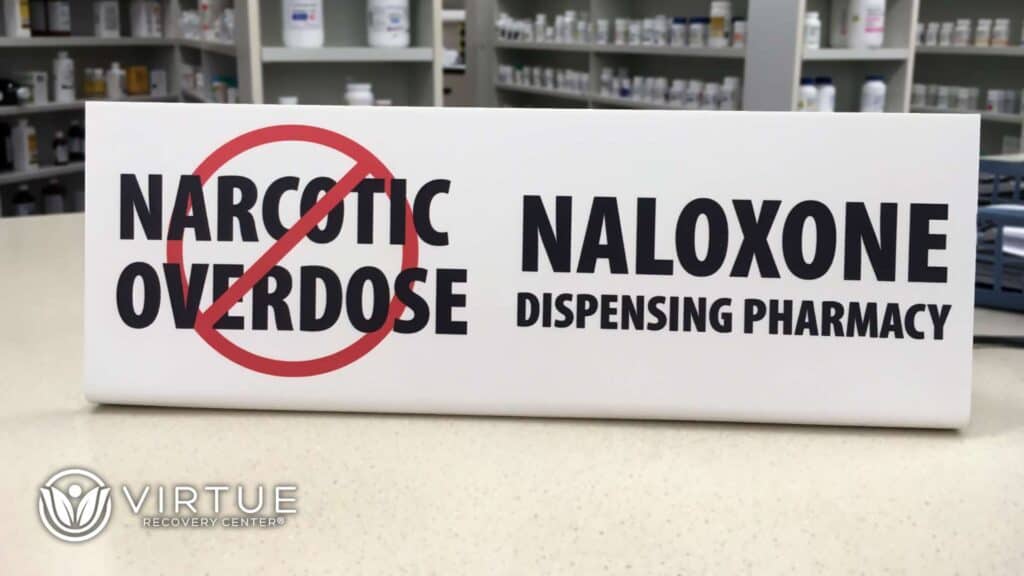Key Takeaways
- Nitazenes are synthetic opioids that are up to 10 times more potent than fentanyl.
- These drugs, mixed into other illicit substances, increase overdose risks.
- Addiction treatment and harm reduction strategies are critical for addressing this public health crisis.
Introduction
The opioid crisis has devastated communities across the world, with synthetic opioids like fentanyl playing a central role in the rise of overdose deaths. Now, a new synthetic opioid, nitazenes, has emerged as an even more potent threat.
Nitazenes, originally developed for medical purposes but never approved for use, have recently appeared in the illicit drug market. Reports suggest that nitazenes are significantly more potent than fentanyl, making them incredibly dangerous. In this article, we’ll explore the effects of nitazenes, their risks, and the importance of seeking treatment for opioid addiction.
What Are Nitazenes?
Nitazenes are a class of synthetic opioids first developed in the 1950s as potential painkillers. Despite their initial development, they were never approved for medical use due to their high potency and risk of severe side effects.
In recent years, nitazenes have reemerged in the illicit drug market. These drugs are often found in counterfeit pills or mixed with other substances like heroin or fentanyl, further increasing their danger. Common nitazene analogs include isotonitazene, metonitazene, and etonitazene.
Are Nitazenes More Potent Than Fentanyl?
Nitazenes are reported to be significantly stronger than fentanyl, one of the most potent synthetic opioids currently contributing to the overdose crisis.
- Potency: Nitazenes are believed to be up to 10 times as potent as fentanyl and 100 times as potent as morphine.
- Effects: Even a tiny amount of nitazenes can cause severe respiratory depression, a hallmark of opioid overdose.
- Overdose Risks: The extreme potency of nitazenes increases the likelihood of accidental overdose, especially when users are unaware of their presence in a drug.
This heightened potency makes nitazenes a significant concern for public health officials and those working to combat the opioid crisis.
How Are Nitazenes Entering the Drug Market?
Nitazenes are often manufactured in clandestine labs and added to other drugs to increase their strength or reduce production costs. This practice is highly dangerous, as users may not realize that the drugs they are taking contain nitazenes.
- Illicit Mixing: Nitazenes are commonly found in counterfeit pills that resemble prescription opioids or benzodiazepines.
- Lack of Awareness: Many individuals unknowingly consume nitazenes, leading to unexpected side effects or fatal overdoses.
- Drug Supply Issues: The growing presence of nitazenes highlights the ongoing challenges in controlling the illegal drug market.
Risks and Effects of Nitazenes
Overdose Risks
Nitazenes carry a high risk of overdose due to their potency. Symptoms of a nitazene overdose include:
- Severe respiratory depression.
- Unconsciousness.
- Cold, clammy skin.
- Blue or gray lips and fingernails.
Naloxone’s Role
Naloxone, an opioid antagonist, can reverse the effects of a nitazene overdose. However, due to the strength of nitazenes, multiple doses of naloxone may be required. This makes timely medical intervention crucial.
Public Health Concerns
The rise in overdose deaths related to nitazenes is alarming. These drugs, often undetected in routine drug screens, complicate efforts to monitor and address the opioid crisis.
Harm Reduction and the Need for Awareness
With the growing presence of nitazenes in the drug market, harm-reduction strategies are more important than ever.
- Drug Testing Kits: Fentanyl test strips and advanced drug-testing kits can help detect nitazenes in substances.
- Public Education: Raising awareness about the dangers of nitazenes can help prevent accidental overdoses.
- Policy Changes: Enhanced drug monitoring and improved access to naloxone are essential for reducing harm.
By promoting harm reduction, communities can better address the risks associated with synthetic opioids like nitazenes.
Addiction Treatment for Synthetic Opioids
The emergence of nitazenes underscores the need for comprehensive addiction treatment programs.
Medical Detox
Detox is the first step in recovery, where the body eliminates opioids under medical supervision. This process helps manage withdrawal symptoms safely and comfortably.
Medication-Assisted Treatment (MAT)
MAT combines medications like buprenorphine or methadone with counseling to reduce cravings and stabilize recovery. MAT is particularly effective for treating opioid use disorders.
Therapy and Counseling
Behavioral therapies, such as Cognitive Behavioral Therapy (CBT), help individuals understand and manage the root causes of their addiction. Therapy also provides tools to prevent relapse.
Inpatient and Outpatient Programs
- Inpatient Rehab: Provides 24/7 care in a structured environment, ideal for those with severe addiction.
- Outpatient Rehab: Offers flexibility for individuals who need treatment while maintaining work or family responsibilities.
Seeking professional help is crucial for individuals struggling with synthetic opioids like nitazenes.
Conclusion
Nitazenes represent a new and alarming chapter in the ongoing opioid crisis. Their extreme potency, combined with their presence in the illicit drug market, poses serious risks to public health. Understanding the dangers of nitazenes and their effects is essential for preventing overdoses and supporting individuals affected by addiction.
If you or a loved one is struggling with opioid addiction, don’t wait to seek help. Contact Virtue Recovery Center at 866-461-3339 to learn about personalized treatment options and take the first step toward recovery.
FAQs About The Dangerous Synthetic Opioids Nitazenes and Its Overdose Efffects
What are the illicit emerging synthetic drug nitazenes?
Nitazenes are synthetic opioids that are significantly more potent than fentanyl and have been found in the illicit drug market.
Are nitazenes more dangerous than fentanyl?
Yes, nitazenes are reported to be up to 10 times as potent as fentanyl, making them extremely dangerous.
How are nitazenes affecting the opioid crisis?
Nitazenes contribute to rising overdose deaths as they are often mixed into other drugs, leading to unintentional consumption.
Can naloxone reverse a nitazene overdose?
Naloxone can reverse a nitazene overdose, but its high potency may require multiple doses to be effective.
How can I get help for opioid addiction?
Professional treatment options include detox, medication-assisted treatment, and therapy. Call Virtue Recovery Center at 866-461-3339 for support.
What are the overdose effects of nitazenes and are they more deadly than fentanyl overdoses?
The overdose effects of nitazenes include severe respiratory depression, unconsciousness, and a high risk of death, similar to other synthetic opioids. Nitazenes are potentially more deadly than fentanyl due to their higher potency, often requiring larger or repeated doses of naloxone to reverse an overdose.
Resources
https://adf.org.au/drug-facts/nitazenes/
https://www.deadiversion.usdoj.gov/drug_chem_info/benzimidazole-opioids.pdf



























